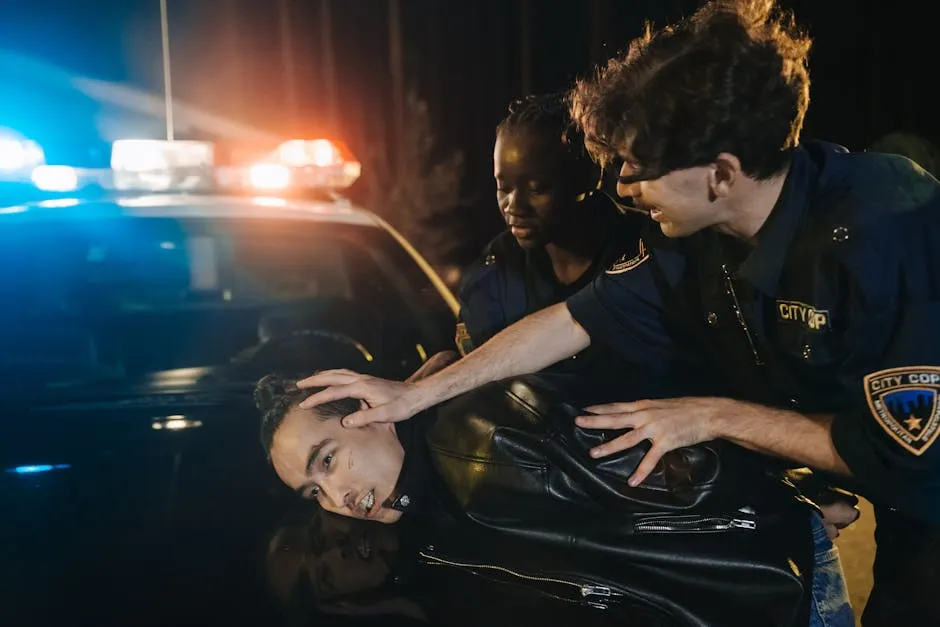Introduction
Welcome to the curious case of Fall River, Massachusetts. This city is known for its rich history and scenic waterfront views. However, it also has a reputation for high crime rates that can make even the bravest souls think twice. With a crime rate that has often ranked among the highest in Massachusetts, Fall River generates quite the buzz!
The purpose of this article is to provide a comprehensive analysis of crime statistics and trends in Fall River. We aim to unpack the numbers, highlight significant changes, and explore the implications these statistics hold for residents and potential visitors alike. Whether you’re a local or just passing through, understanding the crime landscape is essential for navigating this vibrant city.
So why should you care about crime data in Fall River? Well, knowledge is power! By familiarizing yourself with local crime statistics, you can make informed decisions about your safety and well-being. It allows residents to engage with their community proactively, fostering collaboration with law enforcement to create a safer environment. For visitors, understanding the risks can help in planning activities and staying safe while enjoying all that Fall River has to offer.
In this article, we will break down the historical context of crime rates, analyze trends over the years, and provide insights that are not just informative but also critical for anyone connected to Fall River. With witty observations and a friendly tone, we aim to make this exploration of crime statistics both engaging and enlightening. After all, knowledge is the best defense, and being informed about your surroundings can enhance your experience in this charming yet complex city.
If you’re intrigued by the darker side of history, check out “The Devil in the White City” by Erik Larson. This gripping narrative intertwines the story of the 1893 World’s Fair with the chilling tale of a serial killer. It’s a perfect blend of history and true crime for those who love a good thrill!

Historical Crime Overview
Crime Rate Trends Over the Years
Let’s take a stroll down memory lane and look back at crime rates in Fall River over the past decade. The data indicates that crime has been a persistent issue, but there are glimmers of hope. The Fall River Police Department has been diligently compiling reports, and the statistics reveal some interesting trends from 2019 to 2023.
In 2019, the city recorded a significant number of violent crimes, with a rate of about 935 incidents per 100,000 residents. Fast forward to 2023, and we see a different picture. The latest report indicates a decrease in overall crime by 23% from 2022. This is encouraging news, as it suggests a positive trend towards improving safety in the community.
Key statistics from the 2023 report show that overall Part A crimes decreased from 2,732 in 2022 to 2,100 in 2023. This is not just a drop in numbers; it reflects the hard work of local law enforcement and community initiatives aimed at crime reduction. Although the violent crime rate remains a concern, efforts to combat issues like burglary and motor vehicle theft have shown promising results.
The historical data sheds light on the ongoing battle against crime in Fall River. While the city has faced challenges, the recent decline in crime rates demonstrates that change is possible. It’s like the classic underdog story, where the community rises to face adversity and takes strides towards a safer future.
If you’re interested in understanding the psychology behind crime, consider reading “Mindhunter: Inside the FBI’s Elite Serial Crime Unit” by John E. Douglas. This book provides a fascinating glimpse into the minds of serial killers and how law enforcement learns to profile them. It’s a real page-turner!
In summary, understanding the crime rate trends over the years is crucial for grasping the current state of safety in Fall River. With this knowledge, residents can better advocate for their neighborhoods, and visitors can navigate the city with awareness. Stay tuned as we continue to unravel the complex tapestry of crime statistics in this unique city!

Current Crime Statistics
2023 Crime Report Highlights
The latest reports from the Fall River Police Department reveal some intriguing updates. Overall crime in Fall River decreased by an impressive 23% in 2023 compared to the previous year. This shift is like a breath of fresh air in a city often clouded by crime concerns.
Key statistics from the 2023 report paint a clearer picture. The total number of Part A crimes dropped from 2,732 in 2022 to 2,100 in 2023. That’s not just a minor dip; it’s a significant decline that demonstrates the effectiveness of community efforts and police initiatives.
Let’s break down some of the key findings:
- Violent Crimes: The number of violent crimes remains a focal point. While the report indicates a slight increase in certain categories, such as aggravated assaults, the overall violent crime rate still reflects the city’s ongoing challenges. In 2023, there were 935 violent crimes reported, which translates to about 10 per 1,000 residents.
- Property Crimes: On a brighter note, property crimes, including burglary and theft, saw a significant reduction. Burglary incidents decreased by over 65%, showcasing a concerted effort to enhance neighborhood safety.
- Robbery Rates: The total number of robberies also saw a decline, with 81 reported cases in 2023. This figure marks a 23.58% decrease compared to the previous year.
- Drug-Related Incidents: Interestingly, drug-related arrests increased slightly, with 185 arrests reported. While this might sound alarming, it reflects law enforcement’s proactive stance on tackling substance abuse issues.
Statistics visualization is an effective tool to grasp these changes. Consider using charts or tables to illustrate these trends clearly. For instance, a bar chart could compare the number of violent and property crimes from 2022 to 2023, making the information easily digestible for the reader.
Overall, the 2023 crime report from Fall River illustrates a city in the midst of change. The significant decrease in crime rates offers hope for residents and visitors alike. Yes, challenges remain, but the numbers suggest a city committed to improving safety for everyone. As we continue to monitor these trends, we can only hope that the positive trajectory continues, making Fall River a safer place for all.

Violent Crime Statistics
Detailed Breakdown: When it comes to violent crime, Fall River has its share of challenges. In 2023, the city reported around 935 violent crimes, which breaks down to roughly 10 incidents per 1,000 residents. Specifically, the breakdown includes:
- Murder: 3 cases
- Rape: 50 incidents
- Robbery: 103 occurrences
- Assault: A staggering 779 reports
These numbers indicate a significant presence of violent crime that continues to concern residents.
Comparative Context: Now, let’s put these figures in perspective. Fall River’s violent crime rate exceeds the national average of approximately 4 per 1,000 residents. Comparatively, Massachusetts as a whole shows a lower average, with violent crime rates around 3.2 per 1,000. Clearly, Fall River’s numbers paint a more alarming picture than both state and national averages, prompting discussions about safety and community initiatives.
If you want to dive deeper into crime narratives, I highly recommend “In Cold Blood” by Truman Capote. This book is a true classic, exploring the brutal murder of a Kansas family and the subsequent investigation. It’s a chilling read that will keep you on the edge of your seat!

Property Crime Statistics
Types of Property Crimes: Property crime is another area where Fall River struggles. The latest statistics reveal various offenses, including:
- Burglary: 383 incidents
- Theft: 590 occurrences
- Motor Vehicle Theft: 190 incidents
These numbers highlight a concerning trend in property crimes, contributing to the city’s reputation.
Victimization Rates: If you live or visit Fall River, it’s essential to be aware of your odds. Residents face a 1 in 45 chance of becoming a victim of crime. For property crimes specifically, the likelihood increases to 1 in 20, making it crucial for locals to adopt precautionary measures. This context adds a layer of urgency to ongoing efforts to enhance community safety.

Crime Comparison
Comparison with Other Cities
When comparing crime rates, Fall River stands out—though not in a favorable way. Examining similar cities in Massachusetts and across the U.S., Fall River’s overall crime rate is notably higher. For example, cities like Springfield and Brockton present lower rates, with Springfield at approximately 988 per 100,000 residents. In fact, Fall River ranks among the top 100 most dangerous cities in the U.S., a title that raises eyebrows and concerns.
Across the nation, the average violent crime rate sits around 4 per 1,000 residents, whereas Fall River’s rate is nearly 2.5 times that. Even when considered against cities with comparable demographics, Fall River’s crime metrics highlight a pressing need for attention and improvement.
In summary, while property crimes also plague many urban areas, Fall River’s violent crime statistics tell a more urgent story. The city continues to grapple with higher rates than average, underscoring the importance of community engagement and law enforcement collaboration to foster a safer environment. As we look at both violent and property crimes, it’s clear that Fall River has room for improvement, and understanding these statistics is the first step toward change.

Ranking
Fall River, Massachusetts, doesn’t win any medals when it comes to crime rates. In fact, it ranks among the top 100 most dangerous cities in the U.S. This is sobering news for locals and visitors alike. With a crime rate higher than 96% of Massachusetts cities, Fall River has established itself as a hotspot for crime. The city’s violent crime rate stands at approximately 9.98 per 1,000 residents, which is significantly above the national average of 4 per 1,000. For context, cities like Springfield and Brockton boast lower crime rates, making Fall River appear even more alarming.
For those looking to arm themselves with knowledge about crime and its implications, consider “The Anatomy of Violence: The Biological Roots of Crime” by Adrian Raine. This book delves into the biological factors that contribute to criminal behavior and is a must-read for anyone interested in the science behind crime. You can find it here.

Neighborhood Analysis
Safest and Most Dangerous Areas: Not all neighborhoods in Fall River are created equal. For instance, areas like Highlands North and Maplewood East enjoy a reputation as some of the safest, with lower crime rates and friendly community vibes. On the flip side, neighborhoods such as Flint East and the North End frequently make headlines for higher crime rates. This stark contrast serves as a reminder that crime isn’t evenly distributed across the city.
Community Sentiment: When it comes to feelings of safety, the residents’ sentiments vary widely. In a survey conducted among locals, 52% admitted feeling somewhat safe, while 40% felt pretty safe, but still noted safety concerns. A mere 8% expressed feeling unsafe on a regular basis. Law enforcement’s effectiveness also came into question, with only 40% of respondents believing police are very visible and responsive. Many felt that while officers are present, their response times could be better. This mixed bag of sentiments highlights the need for ongoing dialogue between residents and law enforcement to enhance community safety.

Causes and Contributing Factors
Socioeconomic Factors
Poverty and Crime Correlation: Fall River grapples with an 18.3% poverty rate, significantly higher than the national average of 15.1%. This correlation between poverty and crime is evident. Areas with higher poverty levels often see increased crime rates, and Fall River is no exception. As financial struggles persist, some residents may resort to crime as a means of survival.
Population Density: With a population density of approximately 2,705 people per square mile, Fall River is considerably more crowded than the national average of about 90.6 people per square mile. This high density can lead to increased interactions, both positive and negative, among residents. More people can mean more opportunities for crime, especially in areas where economic opportunities are scarce. The overlapping issues of poverty and density create a breeding ground for crime, making it essential for local authorities to consider these factors when devising strategies for improvement.
In summary, understanding the ranking, neighborhood dynamics, and socioeconomic factors that contribute to crime in Fall River sheds light on the complexities of the city’s safety landscape. As we analyze crime statistics further, it becomes clear that addressing these root causes is crucial for fostering a safer community.

Law Enforcement and Community Response
Police Department Insights: In Fall River, the police department plays a crucial role in combating crime. They’re not just crime fighters; they’re community partners. With recent reports showcasing a 23% decrease in crime, it’s clear their efforts are paying off. The department focuses on proactive strategies, aiming to build trust and rapport within the community. Public safety initiatives and community policing foster relationships, encouraging residents to collaborate with officers. This partnership allows for more than just crime fighting; it’s about creating a safer, more vibrant city. After all, when law enforcement and the community work hand in hand, everyone benefits.
Public Perception: How do residents view safety in Fall River? It turns out, perceptions can significantly influence community behavior. According to recent surveys, 52% of locals feel somewhat safe, while 40% feel pretty safe but remain cautious. Such feelings can directly impact how residents interact with their surroundings. When the community feels secure, they’re more likely to engage in local events and support neighborhood initiatives. Conversely, safety concerns can lead to isolation and distrust. Thus, fostering a positive public perception is essential for encouraging community involvement and collaboration with law enforcement. After all, a united front is more effective against crime than a fragmented one.

Want to know more about the psychological aspects of crime? Check out “Serial Killers: The Method and Madness of Monsters” by Peter Vronsky. This book offers a gripping exploration of the minds of serial killers, making it a fascinating read for those curious about criminal psychology!
Conclusion
In this comprehensive analysis of Fall River’s crime statistics, we explored the multifaceted nature of crime and the city’s response to it. The significant decrease in overall crime by 23% in 2023 offers a glimmer of hope, indicating that concerted efforts by law enforcement and community members are making a difference. However, the persistent challenges related to violent crime remain a crucial concern.
Looking ahead, the trends suggest a potential for continued improvement. The proactive measures taken by the police department, combined with community engagement, could lead to further reductions in crime rates. With ongoing initiatives focused on outreach and collaboration, residents might experience a safer living environment in the coming years.
Now, let’s not forget the role of community involvement. Encouraging residents and stakeholders to participate in local initiatives is vital. By attending neighborhood meetings, supporting local programs, and communicating openly with law enforcement, everyone can contribute to creating a safer Fall River.
If you’re a resident, take action and get involved. If you’re a visitor, stay informed and aware. Together, let’s work towards a Fall River where safety is a priority for everyone.

FAQs
What is the current crime rate in Fall River?
The latest statistics indicate a crime rate of approximately 22 crimes per 1,000 residents. This figure is an improvement from previous years, reflecting efforts in crime reduction.
How does Fall River’s crime rate compare to other cities in Massachusetts?
Fall River’s crime rate is higher than 96% of Massachusetts cities. For context, Springfield’s rate is lower, showcasing a significant disparity in safety levels across the state.
What are the safest neighborhoods in Fall River?
The safest neighborhoods include Highlands North, Steep Brook, and Maplewood East. These areas enjoy lower crime rates, making them more appealing for families and individuals seeking a secure environment.
What initiatives are in place to reduce crime in Fall River?
Various community programs, such as neighborhood watch groups and youth engagement initiatives, aim to reduce crime. The police department actively participates in these efforts, fostering collaboration with residents.
How can residents protect themselves from crime in Fall River?
Practical tips for residents include staying aware of their surroundings, securing homes with quality locks, and participating in community safety programs. Utilizing local resources and staying connected with neighbors also enhances safety.
What are the trends in crime over the past decade?
Over the past ten years, Fall River has seen fluctuations in crime rates, with a general trend of improvement in recent years, particularly in property crimes.
How effective is the local police department?
Many residents believe the police department is making strides in visibility and responsiveness. However, ongoing efforts to enhance their presence and effectiveness remain a priority for the community.
For those interested in understanding crime statistics more broadly, exploring fremont crime statistics can provide additional insights into safety trends.
Please let us know what you think about our content by leaving a comment down below!
Thank you for reading till here 🙂
All images from Pexels




